It’s a joy to have children’s book author Susan Maupin Schmid by for an interview. Susan is the author of the 100 Dresses series from Random House, an avid seamstress, and a Mentor Mom for MOMSnext (a division of MOPS International). She considers her inner 10-year-old her greatest asset as a writer and mentor (except when said inner child wants to stay up late or play Animal Crossing). You can connect with Susan at her website SusanMaupinSchmid.com or on Twitter @maupinschmid.
When you buy through my links, I may earn money from my affiliate partners. Learn more.
1. Susan, it’s wonderful having you here for an interview. Thank you for letting us peak inside your experiences writing children’s books and sharing your journey with us. You have three unique books out right now; If the Magic Fits (2016), Ghost of a Chance (2017), and Starlight Slippers (2018). I also hear the paperback version of Starlight Slippers will be out June 25th, though people can pre-order it now. These three books are all in your 100 Dresses series. How did the idea for this series come to be and how many dress do YOU have in your closet?
100 Dresses was inspired by Eleanor Estes’s Newbery Award-winning book, The Hundred Dresses, which was read to me by my first grade teacher. In the story, Wanda only has one dress, something her fellow students delight in teasing her about, so she creates an imaginary closet of one hundred beautiful dresses. The book’s purpose was to inspire empathy for others. But my six year old self didn’t see it that way. She had zero sympathy for bullies, even those who were sorry. She wanted Wanda to have those dresses! Take that, bullies!
As an adult, while I appreciated Eleanor Estes’s reasons for writing The Hundred Dresses, I still wanted those dresses…only in my world they would have to be magic and they had to live in a castle built by dragons, with a princess, a fiendish plot, and a pot-scrubbing heroine—so If the Magic Fits was born.
As for my closet…sadly, the current dress count is ten…but I am always looking!
2. Childhood truly is a magical time. You’ve noted elsewhere your fondness for books as a child and coming back to them later in life when your own family began to grow. What are some of your favorite children’s books that mean the most to you? What makes them special?
Three childhood standouts are: Mary Norton’s The Borrowers, Edgar Eager’s Half Magic, Laura Ingalls Wilder’s Little House books. I once asked my Grandmother what it was like on the prairie…I was nine…she was not amused; she informed me in no uncertain terms that that was way before her time.
I loved The Borrowers because well, tiny things! I still like miniatures. Half Magic…a magic talisman that lets you wish for anything! Too bad you only get half of it. Little House: Laura has a lot of difficulty being the good little girl her sister is. Enough said there.
I could go on and on, though. LOVE Eoin Colfer’s Artemis Fowl, Sheila Turnage’s Three Times Lucky, Kevin Sand’s Blackthorn Key, Katherine Woodfine’s The Clockwork Sparrow. I love fantasy, mystery, adventure, historical fiction, and a good old heart-warming tale like Kate DiCamillo’s Because of Winn Dixie. I just checked Rebecca Ansari’s The Missing Piece of Charlie O’Reilly out of the library…ooh, it sounds good.
3. As a traditionally published author, you are represented by the talented industry veteran agent, Sara Crowe, with Pippin Properties. How did the two of you connect?
I sold my first novel, Lost Time, on my own while holding down the fort at home, juggling my kids’ needs/activities, and dealing with my parent’s struggles (my father was dying of cancer.) After that, I was determined not to do it alone again. I queried Sara after finding her online. She responded almost immediately. The rest is history; she’s been my agent for about a dozen years.
I know there’s a lot of talk about branding these days, which can be limiting. Sara originally signed me on when I was writing YA (that sadly never sold); then I swung over to Middle Grade and she went with me, and now…well, let’s just say I’ve thrown her another writing curve. She lets me be me; I can’t thank her enough for that.

4. With numerous books on the market, there is no doubt you’ve learned a thing or two over the years to hone your writing skills. How do you approach your stories or new ideas differently now than you did years ago?
I craft them more carefully while trying not to control them. That makes sense, right? Probably not. I’ve developed a greater control on what I’m writing and why I’m writing it, while letting the story be what it needs to be. Am I getting clearer? Did I mention that I’m a perfectionist?
My kids would add hyper to that. Basically, I’ve learned to control my perfectionism while still benefiting from it. I despise “good enough”. I want to create marvelous, spectacular, and jaw-dropping.
5. A published book has been through many trials. What were some difficult challenges you’ve encountered on the road to publication? What has been the most enjoyable experience so far?
My first novel took four years from acquisition to publication. I ended up working with a different editor than the one who acquired the book. Not because of me, but because of changes in the publishing house. It was very discouraging. There were moments when I didn’t think I’d ever see the end of the tunnel.
Also, the dirty little secret of writing: selling one book doesn’t guarantee a second. There was that long almost decade between the first and the next. I tried to quit. Honestly. Several times. At first, my husband wouldn’t let me and then I couldn’t let myself. It was so tempting.
The most enjoyable part of being published was working with Diane Landolf at Random House. We just clicked. We were on the same page. She made me cut 10K words. Ouch. I told my husband that that was impossible. He told me to get over myself. It involved lots of whining, chocolate, and coffee, but I did it. Diane pushed me to be a better writer.
6. Many authors identify themselves as a plotter (one who details out the story before filling in the words) or a pantzer (one who lets the words flow and the story develop as one writes). Are you one or the other? What strategy or practice helps you consistently move from idea to finished product over, and over, and over again?
Synopsis: the word strikes terror in me. Don’t ask for one. By the time I reduce my idea to a synopsis, I’ve lost all interest in writing it. So I’m a bit of a reformed pantser. I always know where my story starts and where it ends. Over ten book (yes ten, four of which were published) I’ve developed a strategy of typing up plot lines that consist of key actions in the order they occur. And I scribble lots of little notes on post-its. I consider these my guard rails.
They keep my story on the path it needs to take while allowing for expansion along the way. (Spoiler Alert!) I intended Darling to find the starlight slippers in book three, but while I was typing the scene another character jumped up and announced they’d found them. It was a hmm moment. It altered the story, but also made it stronger. I left it in.
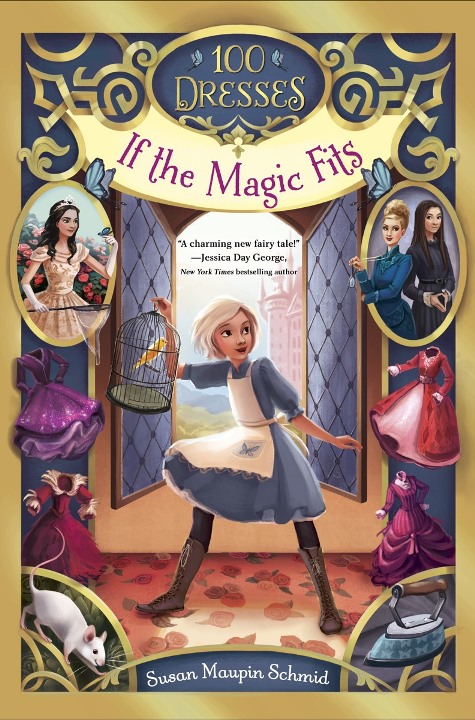
7. 100 Dresses is such a unique and specific idea. Is it all for the fun and magic of a reading adventure or do you have a message you’re hoping to communicate to readers? What would you like readers to “get” from reading these books?
Fun is important. I think we forget that sometimes in our search for ‘meaningful’ books. So the books are meant to be fun, but they do have a point.
Who am I? Do I matter? Does my life have a purpose? These are the kinds of questions I think kids struggle with; and Darling certainly does. I think the most iconic thing in the series is the crate stamped artichokes that Darling is given to keep her things in. In the beginning, it’s empty, but she carries it with her anyway because she doesn’t want anyone to know that she doesn’t have anything. The crate is a microcosm of Darling’s life, subtle, but still there if you want to see it.
You thought I’d mention the dresses, didn’t you? They are important; they allow Darling to step into so many other lives and experience her world from other’s perspectives. Besides, they are saucy and smart, and full of their own opinions.
8. An author or illustrator who has stuck with their craft all the way to publication while juggling the responsibilities in life is truly remarkable. What do you do to get away and advance your writing? What is your biggest distraction to writing?
Fabric, it’s the great restorative. I sew ridiculously elaborate doll clothes, for which I have no particular use. Fortunately, I happen to know a few little girls in need of new doll clothes. I sew them, they play with them. A total win-win. Readers can see a few 18-inch versions of the 100 dresses on my website at the Candace’s Closet page.
My greatest distractions are books (there’s always a shiny exciting new one I must read), my rescue dog Max, who believes I exist to adore him, and Animal Crossing. My 3DS XL is stashed in a drawer, where it’s going to stay. I’ve conquered, nay mastered, Animal Crossing on three systems, so I don’t need to play it again. And rumors that it might be coming out for the Switch are…sigh. I don’t have a Switch. I won’t buy a Switch. Repeat after me: Susan does not need a Switch!
9. Being an author, although seclusive, is all about connections with readers, other writers, illustrators, editors, book buyers, publicists, etc., etc., etc. Would you shine a light on some of the behind-the-scene book helpers that have been instrumental in bringing your stories to life? They can be family, friends, that receptionist who sent you to the right person or perhaps an intern that gave you some encouragement…
Sara Crowe and Diane Landolf have been a major force of encouragement with just a touch of whip-cracking. Other writers! I still remember the first time I got brave enough to go to a critique group…that was life changing. Letting strangers read your work…Very daunting. I’m an introvert, so I had to make myself go. Make myself talk to people. Make myself submit work at a conference. The more I made myself, the easier it got. Lots of people have made a difference.
My husband Jon, who told me not to quit when I was discouraged, my kids who are now grown up, my friend Faye, who listened to hours of babbling. And my husband’s secretary, Mary Guidicessi, who created a shrine to my books in my husband’s office bookcase. Seriously. Writers such as Sarvinder Naberhaus, Rebecca Janni, Cindy Johnson, just to name a couple. Mallory Loehr at Random House really championed my work, even suggesting the title: If the Magic Fits.
100 Dresses has two great illustrators: Melissa Manwill does covers and Lissy Marlin does internal illustrations. You can check out Lissy’s story on the art at her website at the page ‘Not Your Ordinary Castle.’
10. With your beautiful books on the shelves, it only makes sense that we see many, many more. What do the next 3-5 years look like for you in terms of projects? What can we hope to see from you? Any new book titles in the works?
Definitely more books. I have a new project, writing for an age range I haven’t before. I’m so excited about it—bouncing on my seat excited—but it’s not at a stage where I can talk about it. If it were up to me, I’d spill, but Sara might roast me over hot coals so…yeah!
Which reminds me! Writing and selling a book is really all about patience and perseverance, qualities I didn’t think I possessed. I found them, buried under a bunch of other stuff. I value both. I couldn’t write now without them. My best piece of writing advice is this: Find the story you must tell and tell it, then be determined to see it in print, and decide to be in it for the long haul, because it might just take longer than you think.
Thank you for sharing your journey with us, Susan!
If you enjoyed this interview with children’s author Susan Maupin Schmid, would you give it a like, share it on social media, and leave a comment below? It would mean the world to her and me to hear from you and connect with you. Be sure to subscribe to the blog using the email subscription in the sidebar to be notified of future posts.
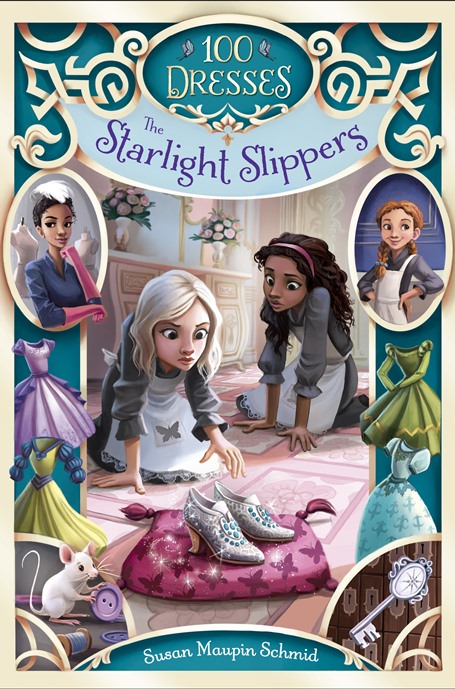
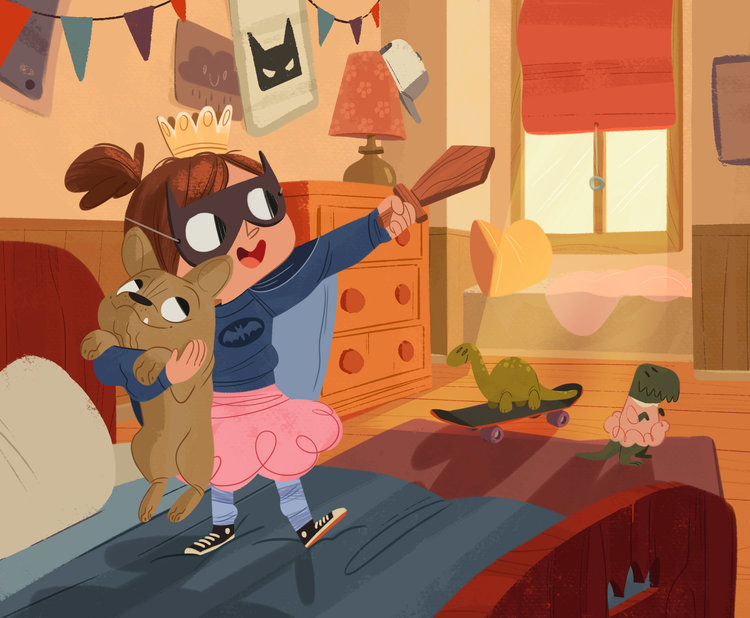
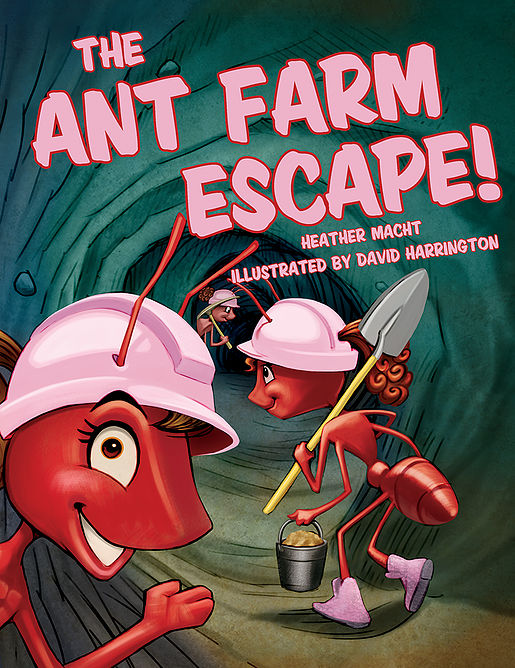
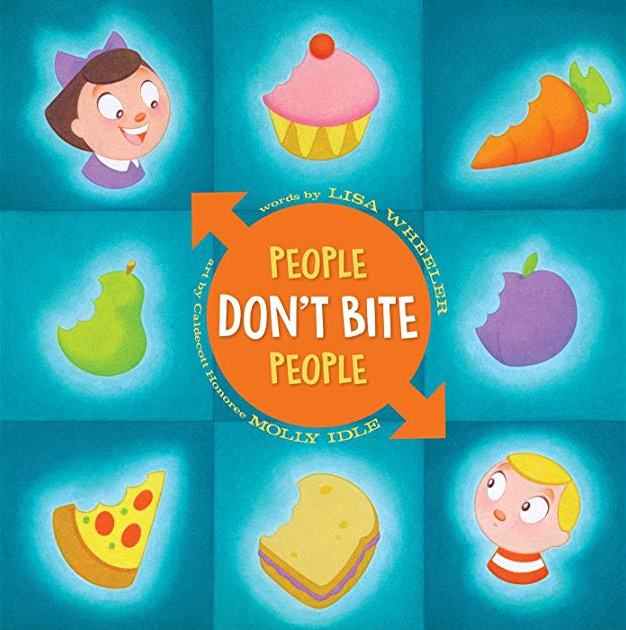
Jessica Crooks
August 8, 2020the illustrations are beautiful and the story seems delightful. As a aspiring children’s book writer, this interview was helpful. Thank you both.
Rhys Keller
August 8, 2020Thank you, Jessica! So glad it resonated with you.
Amy Houts
May 2, 2019Hi Susan, Your books look like so much fun! (I met you at an Iowa event several years ago.) ~ Amy
Rhys Keller
May 2, 2019Thank you for sharing, Amy! I agree, Susan has such a ‘magical’ series!